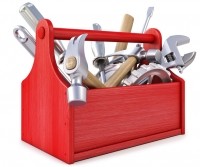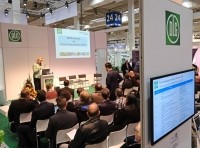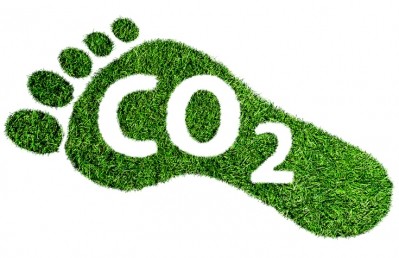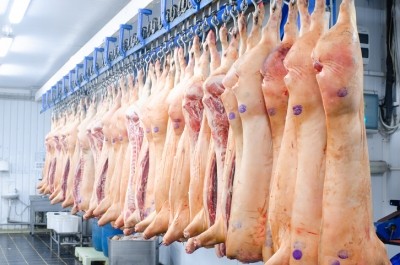Outlook 2017
The road ahead: EU protein balance sheet, currency fluctuations, aqua feed M&A

Alexander Döring, secretary general of FEFAC, kicked off.
In terms of the viability of the livestock and feed sector next year, he said:
“Since two of our major markets, dairy and pork, have been heavily affected by the market crisis in 2016, we expect the CAP ‘post 2020’ review process to provide a new opportunity [in 2017] to rebalance policy towards livestock production by focusing on a new 'tool box' to improve the competitiveness of the livestock and feed sector.”

He said FEFAC anticipates the sustainability of what it calls the ‘EU strategic raw material supply’ will remain high on its agenda: “Unhindered access to raw materials on the global market is a cornerstone of the economic viability of the EU livestock and feed sector. The protein supply is a critical element in the sourcing of raw materials.
“One of FEFAC’s goals for 2017 is to work on a comprehensive EU protein balance sheet with our chain partners and the EU Commission that would correctly map out all major EU protein sources [from] production, consumption, export and import. This would help to bring the potential effects of proposed policy changes into perspective as regards access to such sources and, in particular, the strategic supply of highly concentrated ones,” he added.
Döring also reflected on the sustainability of raw material sourcing and environmental reporting, with 2017 the final year of the Feed Product Environmental Footprint (PEF) pilot: “The work on the delivery of life-cycle assessment (LCA) feed data is to be finalized and we will see the beginning of discussions on future policy development as regards the single market of green products.
“FEFAC is also looking to tackle the topic of deforestation as part of our action plan on responsible soy sourcing in 2017.”
The animal feed industry has been experiencing greater market concentration, he noted. “In the EU, it has been nowhere near as extreme as in other agricultural input sectors, but the trend is there and it will continue in 2017,” said the FEFAC lead.
When it comes elections and referenda, Döring said 2016 has been a tumultuous year. “Who knows what 2017 will bring. We hope politicians are reminded of the fact that the EU single market forms the foundation of our economic growth as regards intra-trade between EU countries, but also as a common export market towards the rest of the world.”
Market concentration, currency, AMR
Richard Maatman, global marketing director at Trouw Nutrition, Nutreco's animal nutrition business, also looked ahead:
He said recent currency fluctuations have favored exports from Latin America, thereby slightly impacting the competitive position of North-American and European producers. “But short-term volatility in currency will not fundamentally impact the industry in the medium or long-term,” said Maatman.
In terms of societal and consumer driven trends, he said growing concerns about antimicrobial resistance (AMR) topped the political and media agenda in 2016 with the impact in the feed industry already being felt.
“This, in combination with required welfare-friendly husbandry systems, will change the way we farm animal protein and requires more focus on integrated solutions addressing the complexity of challenges that farmers face.
“It is up to the feed industry to think beyond nutrition alone, and to integrate feed, farm and health management. As an industry, feed may not be in the driving seat, [but] we are in a position to orchestrate change,” argued Maatman.
Consolidation at farm level is the ongoing megatrend, he said, which was reinforced in 2016 by market pressures for the dairy, swine and egg sectors. “In recent months, however, we are witnessing a noteworthy recovery in dairy and eggs, and in swine as well,” said Maatman.
Global feed output
Alexandra de Athayde, executive director of the International Feed Industry Federation (IFIF) said, in 2017, the federation anticipates a modest global feed production growth, possibly passing one billion tons. “However, this will vary by region – for example Brazil is forecast to register up to 3% growth in feed production. IFIF also anticipates that there will be continued growth for both existing and innovative specialty feed ingredients.
“Feed safety remains an important objective and, in 2017, the IFIF will continue to roll out its global animal nutrition program to train compound feed production stakeholders in developing countries using the IFIF/FAO feed manual,” said de Athayde.
The feed industry, she continued, is under increasing pressure to supply sustainable, safe and healthy feed.
“With the expanding global population, forecast to exceed nine billion people by 2050, comes an associated higher demand for animal protein and, therefore, feed. Over the medium term this requires a significantly higher production of compound feed globally, as well as innovation and new technologies to enhance the efficiency of feed and livestock production.”
Initiatives to support the international feed industry in that regard include the Global Feed LCA Institute (GFLI), the FAO-led Partnership on Livestock Environmental Assessment and Performance (LEAP) and the Global Agenda for Sustainable Livestock, she said.
M&A activity
Christopher Nolan, managing director, global deals origination, PricewaterhouseCoopers Corporate Finance, weighed in with his thoughts on likely M&A deals in the sector in 2017.
Earlier this year Nolan saw aqua as the feed segment with the most appeal. We asked him whether this was still the case:
“Unequivocally, yes. The global feed market has evolved amid stagnant commodity prices and increased consumer demand for poultry and farmed fish, both species with predominately vegetable protein-based diets, As a result, demand for soy meal is expected to continue to be robust.

“In Asia, growing demand for poultry and fish has put pressure on sub-scale feed producers. Meanwhile, Western feed producers with historically limited efforts in aqua feed are facing pressure to expand their product offerings and access new geographic markets, resulting in a set of motivated stakeholders that continue to seek out new investment opportunities in aqua feed.”
In North America, the analyst also noted consumer demand for fish and acceptance of both wild-caught and farmed varieties has been robust.
“Farmed salmon has grown from less than 10% of total volume 25 years ago to now over 70% of the global salmon market. In response, some companies, such as High Liner Foods, have needed to supplement its traditionally wild-caught seafood procurement strategies with farmed sources. Today, High Liner sources approximately 30% of its seafood from aquaculture sources, increasingly through strategic alliances with key producers in Asia.
In all, the acquisition of or the development of key strategic alliances with leading aqua feed suppliers by larger, multi-species animal feed companies is expected to continue in 2017,” said Nolan.
GMO free production
In terms of more niche trends, we got the low down on likely developments for the non-GMO market in Germany over the next 12 months from Alexander Hissting, general manager of the German Association of Food without Genetic Engineering (VLOG).
“In 2017, we’ll see a clear continuation of the development in the German dairy sector towards more non-GMO production. In 2016, we saw the big move by Lidl offering only “Ohne Gentechnik” fresh milk under its own brand Germany wide and all other retailers trying to follow suit.
“UHT milk and a variety of cheeses, plain yoghurt, butter and cream are expected to follow in 2017.
“The Bavarian state agriculture agency (LfL) is projecting a 70% share for non-GMO dairy produced in Bavaria by the end of 2017. A quarter of all German milk is produced in Bavaria. Nationwide, VLOG projects the share [for non-GMO dairy] to be at about 30%.”
All eggs and all fresh poultry meat for German private label retail brands are already produced non-GMO, said Hissting. He said next year will see some regional concepts for pork and beef being placed on the market. “But the turnaround for these segments [won’t be] until after 2017,” he added.
The non-GMO feed trend in Germany has had an impact on production in other European countries as well, said Hissting.
“The German market is drawing considerable amounts of non-GMO products dairy products from Austria, Czech Republic, Poland, the Netherlands and Scandinavia, [while GMO free] poultry meat from Italy and eggs from the Netherlands are also being imported,” said the VLOG general manager.









